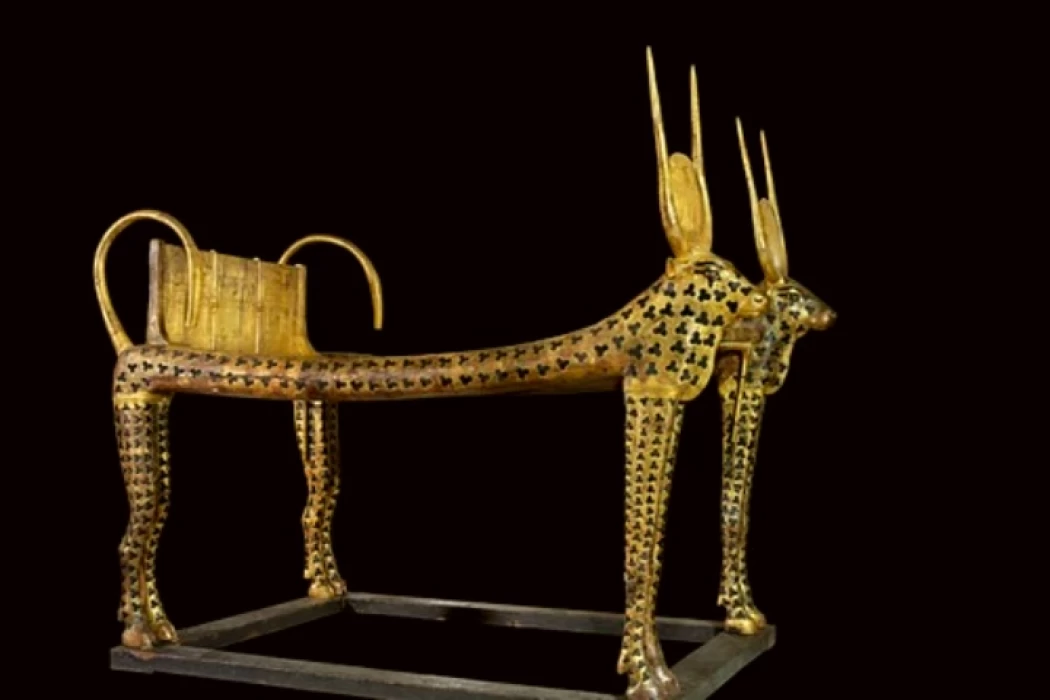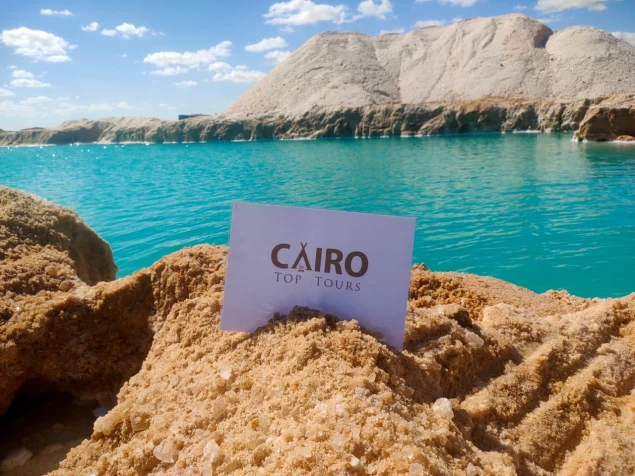
Mehet Weret | Göttin des Wassers
Mehet Weret
Sie wurde als Kuh, auf einer Schilfmatte liegend, als Mädchen mit dem Kopf einer Kuh oder als attraktive Dame dargestellt. Typischerweise trug sie das Kleidungsstück der Sonnenscheibe zwischen ihren Hörnern.
Göttin des Wassers
Im Allgemeinen wird sie mit einem Menat dargestellt. (Das Menat, ein Schmuckstück mit einem speziellen Gegengewicht, ist kein echter Schmuck, sondern ein Hathor geweihtes Instrument.)
Als Wassergott reiste sie nicht nur auf dem Wasser und nahm den Herrscher oder Sonnengott mit sich, sondern man glaubte auch, dass sie in der Lage sei, belebendes Wasser nach Ägypten zu bringen. Sie war eine Gottheit der jährlichen Überschwemmung des Nils, wie ihr Name andeutet, und war daher sowohl mit dem Fluss in Ägypten als auch mit dem Fluss in der Unterwelt und dem Fluss im Himmel (dem undurchsichtigen Weg) verbunden. Mehet-Weret war ein Gott des Wassers von Nun, aus dem der Sonnengott hervorging, und wurde die Mutter von Re (Ra) genannt.
Im Zeitalter der Pyramiden beschrieb Mehet-Weret den Wasserweg im Himmel, auf dem sowohl der Sonnengott als auch der König segelten.
Als Gott der Wiedergeburt wurde sie nicht nur für die tägliche Geburt der Sonne gehalten, sondern auch für die Ermöglichung der Wiedergeburt zu Lebzeiten. An der Stelle des ägyptischen Pharaos befindet sich ein Zeremonienbett im Stil des Gottes Mehet-Weret. Der Leichnam wird auf das Bett gelegt, um einen Bezug zu Mehet-Weret und ihrer Fähigkeit, in der Unterwelt zu gebären, herzustellen. Seit dem 18. Jahrhundert war Mehet-Weret die Schutzgöttin der Begräbnisstätte in Waset (Theben) und wurde in Zeremoniepapyri als Kuh dargestellt, die in Papyruspflanzen am Fuße der Berge des Westens steht und nur ihren Kopf herausstreckt. Hathor wurde auf die gleiche Weise dargestellt.
Sie war eine himmlische Kuhgöttin, und als solche war sie mit Hathor und Nut verbunden, die beide als schöne Kuhgöttinnen des Himmels dargestellt wurden. Wie Nut war sie für die tägliche Geburt der Sonne zuständig. Sie war eng mit Nit verbunden, wurde als Kuhgott der Schöpfung dargestellt und "Die Kuh, die Ra gebar" genannt. Als Mehen-Weret Re bei der Schöpfung gebar, wurde angenommen, dass sie ihn in Form einer Sonnenscheibe zwischen ihre Hörner setzte, weshalb sie in der Kleidung von Hathor dargestellt wird. In Theben, einer Stadt in der Nähe von Ipet-Resyt (Luxor)/Ipet-It (Karnak), glaubte man, dass sie die Mutter der einheimischen Gottheiten sei, die "die sieben Weisen" genannt wurden.
Entdecken Sie mehr über die Götter und Göttinnen des alten Ägyptens durch Luxor Tagestouren auch wenn Sie den Zug für ein paar Stunden nach Norden können Sie auch während Assuan Tagestouren oder sogar unsere 2 Tage Tour nach Luxor von Assuan gibt es eine Menge von Ägypten Tagestouren, die nach Luxor aus den verschiedenen ägyptischen Städten wie Hurgada Tagestouren auf dem Landweg nach Luxor oder wenn Sie für einen gemütlichen Urlaub in Sharm kommen können Sie das Flugzeug für einen Tag während Sharm El Sheikh Ausflüge zu erkunden alle der historischen Stadt.
Buchen Sie jetzt für eine große Erfahrung von Ägypten Urlaub und Ägypten Urlaub Pakete Luxor Tagesausflüge, Assuan Tagesausflüge und Ägypten Luxus-Touren, um die fabelhafte Gizeh Pyramiden Tour & die Sphinx, das Ägyptische Museum Tour, Tal der Könige, koptischen und islamischen Kairo sowie Abu Simbel Tempel, der beste Weg, um das Land zu erkunden sind Ägypten Tagesausflüge, Kairo Tagesausflüge und Kairo Tagesausflüge vom Flughafen zu sehen, alle die unglaublichen Wunder des alten Ägypten und erfahren Sie mehr über die ägyptische Geschichte.
She was pictured as a cow, lying on a reed mat, as a girl with the top of a cow, or as an attractive lady. typically she was portrayed sporting the sun disk article of clothing between her horns. She generally is shown sporting a Manet. (The Menat, a piece of jewelry with a special counterweight, isn't truly jewelry - it's an instrument sacred to Hathor.)
As a god of water, she not solely traveled on the water, taking the ruler or sun god together with her, however, she was thought to be in a position to bring vitalizing water to Egypt. She was a god of the yearly inundation of the Nile River, as indicated by her name, so was coupled to each the river in Egypt, and also the river within the underworld, and also the river within the sky (the opaque Way). Mehet-Weret was a god of the waters of Nun, from that the sun god emerged, and was called the Mother of Re.
Mehetweret means "Great Flood." The Pyramid Texts make reference to her. She gives birth to the sun at the beginning of time, according to creation tales from ancient Egypt. Her hindquarters give birth to the god Ra in Chapter 17 of the Book of the Dead. A cow with the sun disk between her horns is how she is portrayed in art. She may also be known as the "Eye of Ra." She is connected to the goddesses Neith, Hathor, and Isis, with whom she shares traits. She is sometimes just a title for these goddesses. Among her specific titles were "The Island" and "The Hill."
As a god of water, she not solely traveled on the water, taking the ruler or sun god together with her, however, she was thought to be in a position to bring vitalizing water to Egypt. She was a god of the yearly inundation of the Nile River, as indicated by her name, so was coupled to each the river in Egypt, and also the river within the underworld, and also the river within the sky (the opaque Way). Mehet-Weret was a god of the waters of Nun, from that the sun god emerged, and was called the Mother of Re (Ra).
In the age of the Pyramids, Mehet-Weret described the waterway within the heavens, sailed upon by each the sun god and the king.
As a god of rebirth, she wasn't solely thought to provide birth to the sun daily; however, she was thought to be able to facilitate rebirth into a lifetime. there's a ceremony bed within the spot of the Pharaoh of Egypt, within the style of the god Mehet-Weret. The body might are placed on the bed to make sure a reference to Mehet-Weret and her ability to provide birth within the underworld. From the eighteenth kinsfolk forward, Mehet-Weret was the patron god of the burial site at Waset (Thebes) and was portrayed in ceremony papyri as a cow standing in papyrus plants at the foot of the mountains of the West, solely her head gesture out. Hathor was portrayed in the same manner.
Mebet-Weret's Roles
Mehet-Weret played an important role in the rebirth of the sun-god Re and the texts of the coffin of Mentuhotep II and of the tomb of Siptah in the Valley of Kings confirm this role and mention that the sun-god Re was reborn every morning between the thighs of Mehet-Weret and then Re appeared to the world and he was seen as a child issuing from the womb of the sky goddess or as a calf, the offspring of the celestial cow Mehet-Weret and this indicates that she is the great mother of the sun-god Re and she was as a creator goddess.
She was a celestial cow god and, as such, she was coupled to each Hathor and Nut, who were conjointly portrayed as nice cow goddesses of the sky. Like Nut, she was thought to provide daily birth to the sun. She was closely coupled to Nit, was portrayed as a cow god of creation, and called 'The Cow Gave Birth to Ra'. once Mehen-Weret gave birth to Re at creation, she was thought to own place him, within the style of a sun disk, between her horns, that is why she is shown sporting the article of clothing of Hathor. In Thebes a town close to Ipet-Resyt (Luxor)/Ipet-It (Karnak), she was believed to be the mother of the native deities, called "the Seven Wise People"















